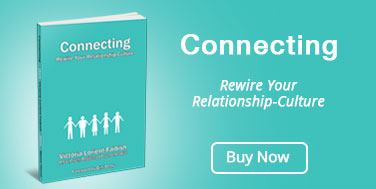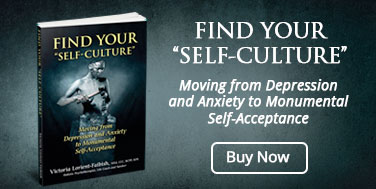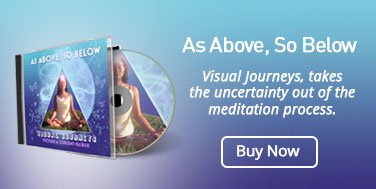published in Vitality Magazine
What is change? How do we achieve this illusive concept? How do we master going beyond what we have been taught to do repeatedly either because we saw it or because it was drilled in to us on pain of who knows what? The thing I ask most readily when a client enters my office is “ What is it that you choose to create by doing this work?” The client is usually quick with a response. “I want to be happy”. Or “I want to change my life”. “I want feel different than I feel now.” I often will attempt to get a clear picture of where specifically my client chooses to go with their intentions regarding these changes. But what I always say in order to truly illuminate where this work (somatic-emotional work) can indeed lead them is:
“Working with the somatic emotional process is not about changing who you are. It is about becoming more of who you are really. The authentic you before you had to put an armoured barrier for protection. Before you underwent a trauma that shocked you into abandoning your true being. Before you convinced yourself for some reason or another that who you are really, is not ok”.
Change requires three main elements: Willingness to do whatever it takes to move into a shift. Awareness to see with clarity that which is truly going on. And Courage to face this sometimes immensely challenging process toward authenticity.
So often we carry with us heavy baggage from another time, yet that baggage is what is often running the show. We have become so very adept at working with this baggage that we do not fully realize the cover up that is going on. But usually this theatre is the very tool that at one time kept us very safe and today sabotages all instinct to grow and step into our greatness. When we look at what is really going on with awareness, we see that the mask has two clear and distinct voices that seem to take over. One is the voice of the hurt child. The other is that of the critical parent. They both have seemingly very adult like characterizations. Upon careful inspection, the two are actually coming from the desperate voice of the child within. Both voices are acting in reaction to others. Giving up their power. Causing us to make auto pilot choices. The result is living life by default versus by choice.
Here are some of the traits of the Hurt Child voice:
– The disease to please so they can be liked.
– Withdrawing from others without letting them know.
– Rebelliousness, temper tantrum (actually the hurt teenager stage)
– Feeling the victim: “Why me? Poor me?”
– Fear based: panic, no trust or faith in life
– Emotional manipulations based on guilting others into doing something for them
– Taking people hostage with emotional blackmail.
– Falling apart so someone will take care of them
– Self-loathing. Low self-esteem. Has experienced lots of criticism growing up.
– Blaming others. Not taking responsibility for ones life, one’s own events.
– Feelings of “I am not enough. I didn’t get enough.”
– Focuses on the past. Living in regret.
– Not able to set clear boundaries. Allowing others invade their boundaries.
– Feeling “Life is unfair.”
More can be added to the list but I think the picture is fairly clear. When any one of these traits is active or is motivating one’s response to life, it usually means that the hurt child is running the show. And this means that a 4 or 5 year old child is running your life.
The critical parent on the other hand seems very mature, very adult like. But in reality the critical parent has simply learned to dominate the instincts of feeling powerlessness. The inferiority complex disguised in a superiority complex outfit.
Here are some traits to recognize the Critical Parent voice:
– Judgmental
– My way or the highway
– Inflexibility, rigidity
– Focuses on “coulda, woulda, shoulda”
– Ruled by the past but lives in the future.-Future worrying
– Passive aggressive behaviours
– Emotional manipulation through shaming and blaming others into doing it their way.
– Fear-based: panic, no trust or faith
– Perfectionistic
– Taking people hostage with emotional blackmail.
– Bitter and ungrateful disposition
– Low self-esteem although looks outwardly like there is a huge ego
– High expectations of others
– No respect for clear boundaries, invading others
– Righteousness
What is evident about these two voices is that at one time or another we have all embodied them. What is also interesting is that when a person takes on the one voice, they are attracting others into their life that take on the counterpart voice. So when the hurt child is present, this automatically calls out like a beacon to a critical parent to come and respond to the hurt child. And vice versa. I so often hear about the belligerent boss invading the shy and fearful employee. Look around, it is everywhere and shows up in various relationship dynamics. This is the cycle, the unending symbiotic loop. One feeds on the other. They almost seem to attract each other like magnets. Often this is the case, so they can learn from each other. If awareness is present then the loop can be broken and the learning can occur sooner than later. The shift from blind repetition to learning the lessons at hand requires the three elements I mentioned earlier: Awareness plus willingness, plus courage equals change.
Once the three elements are in place, there is only one way out of this back and forth trap of these two mutually attracting archetypes. One needs to find a way to step into one’s hero, one’s true self, one’s true authentic being before they got hurt. The innate part of us that is unaltered if found. That is the Balanced Adult voice.
Here are some clear traits of the Balanced Adult voice:
– Non judgmental
– Allowing people to be themselves.
– Accepting of what is
– Present day focussed
– Trusts in the process of life. Has faith and trust.
– Deals with adversity by seeing the larger picture. Asks: ”What is the lesson for me here?” (I call this transcendence thinking)
– Takes responsibility for one’s self in all aspects.
– Draws clear boundaries and sticks to them.
– Does not enable the hurt child nor the critical parent in others.
– Quiets the mind often and listens to one’ own divine guidance.
– Honours the self. Listens to one’s own needs.
– Is authentic
– Has a focused, clear, laser beam intentions in life
– Positive, buoyant attitude
– Action vs. reaction oriented
– Believes that life is supportive.
– Grateful
To step into this empowered adult voice does not happen over night. It is a process. What is truly needed is for a deep, repetitive practice of calling upon the balanced adult voice in us to come forward. We need to parent ourselves with the balanced adult voice, into feeling safe again to be our true authentic self. This is the only way to neutralize the hurt child/critical parent loop/trap. The child needs to feel a sense of hope again. This is the way for the child to stop wanting to control and to stop wanting to run the show any more. The child gets to relax and let the balanced adult manage the store. The critical parent voice in us, also automatically tends to retreat once it feels that it is not being threatened.
The benefit to mastering this paralyzing loop can give one the gift of movement from slavery to freedom. Freedom to pursue fearlessly ones hopes and dreams without a sense of defeatism. Freedom to be one’s authentic divine self, without a sense of stuckness. This is golden in the process of overcoming trauma, shock and repetition/compulsion behaviours. This allows us to move beyond the elements that limit our growth and bring us in to healthy interrelationships with other people. To be free is to allow ourselves the opportunity to step into our greatness and into our authentic self. This, I believe, is our job on the planet.








